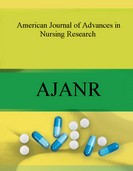Abstract
Title
A COMPARATIVE STUDY TO ASSESS THE EFFECTIVENESS OF PAPAYA DRESSING VERSUS HONEY DRESSING ON WOUND HEALING AMONG DIABETIC PATIENTS
Author
Dr. Mahendra Vishwakarma
Email
mh.awgp@gmail.com
keyword
Comparative study, Assess, Effectiveness, Papaya dressing, honey dressing, wound healing and diabetic patient.
Abstract
Back ground of study: Diabetes mellitus (DM) refers to a group of metabolic disorders characterized by high blood glucose. Diabetic wound is the one of the most common and devastating complication of diabetes mellitus and it?s management is very long and costly and diabetic wound takes more time for recover. Indian papaya and honey have great role in enzymatic debridement in wound healing. Pharmacologic aspect green papaya has two enzymes: papain and chymopapain, which have digestive properties and also the ability to dissolve dead tissue without damaging living tissue. Honey has high osmolarity which prevents bacterial growth, reduce humidify, and promote healing. Problem statement: A comparative study to assess the effectiveness of papaya dressing versus honey dressing on wound healing among diabetic patients admitted in Bhagyday Tirth Hospital Sagar Madhya Pradesh. Objectives: (1) To assess the level of wound in experimental group I and group II. (2) To assess the effectiveness of papaya dressing on wound healing in experimental group I. (3) To assess the effectiveness of honey dressing on wound healing in experimental group II. (4) To compare the effectiveness between papaya dressing and honey dressing on wound healing among diabetic patient. (5) To associate the finding of the effectiveness of papaya dressing and honey dressing between selected demographic variables. Methodology: The research design used for this study was quasi experimental study design. Conceptual framework was based on modified Donabedian model, helping in hospital setting. The sample size was 40, in which 20 samples were in experimental group I and 20 samples in experimental group II. The samples were selected by using systemic random sampling. The tools used for this study was BWAT (Bates- Jenson wound assessment tool) scale to assess the severity of wound. Result and discussion: The data gathered were analyzed using descriptive and inferential statistics. The study revealed that the post test mean score in experimental group I was 1.65(SD ± 0.75) and calculated„t? value was 4.36 which was significant at p< 0.05 level and in experimental group II mean score was 1.75 (SD ± 0.72) and „t? value 3.56 which were significant at p<0.05 level. The study revealed that papaya dressing and honey dressing both are effective in wound healing among diabetic patients but papaya is more effective than honey.













